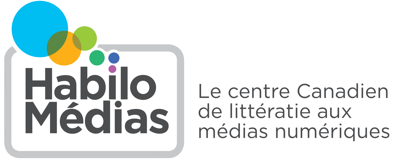Outcome Chart - Alberta - English Language Arts Grade 6
listen, speak, read, write, view, and represent to explore thoughts, ideas, feelings, and experiences
Discover and Explore
- read, write, represent and talk to explore and explain connections between prior knowledge and new information in oral, print and other media texts
- engage in exploratory communication to share personal responses and develop own interpretations
Lessons
- Avatars and Body Image
- Game Time
- Taking Charge of TV Violence
- The Anatomy of Cool
- Understanding the Internet: Using the Internet
- Violence in Sports
Understanding the Internet: Communication and Social Media
Student Tutorial
listen, speak, read, write, view, and represent to comprehend and respond personally and critically to oral, print, and other media texts
Use Strategies and Cues
- combine personal experiences and the knowledge and skills gained through previous experiences with oral, print and other media texts to understand new ideas and information
- apply knowledge of organizational structures of oral, print and other media texts to assist with constructing and confirming meaning
- identify and use the structural elements of texts, such as magazines, newspapers, newscasts and news features, to access and comprehend ideas and information
Respond to Texts
- experience oral, print and other media texts from a variety of cultural traditions and genres
- explain own point of view about oral, print and other media texts
- make connections between own life and characters and ideas in oral, print and other media texts
- discuss common topics or themes in a variety of oral, print and other media texts
- discuss the author’s, illustrator’s, storyteller’s or filmmaker’s intention or purpose
- observe and discuss aspects of human nature revealed in oral, print, and other media texts, and relate them to those encountered in the community
- comment on the credibility of characters and events in oral, print and other media texts, using evidence from personal experiences and the texts
- discuss how detail is used to enhance character, setting, action and mood in oral, print and other media texts
Understand Forms and Techniques
- identify key characteristics of a variety of forms or genres of oral, print and other media texts
- discuss the differences between print and other media versions of the same texts
- explore techniques, such as visual imagery, sound, flashback and voice inflection, in oral, print and other media texts
- identify strategies that presenters use in media texts to influence audiences
Lessons
- Comic Book Characters
- Freedom to Smoke
- Images of Learning
- Kids, Alcohol and Advertising: Interpreting Media Messages
- Kids, Alcohol and Advertising: Understanding Brands
- Kids, Alcohol and Advertising: Young Drinkers
- Looks Good Enough to Eat
- Pay for Play
- Teaching TV: Film Production: Who Does What?
- Teaching TV: Learning With Television
- The Anatomy of Cool
- Tobacco Labels
- TV Dads: Immature and Irresponsible?
- Understanding the Internet: Pathways and Addresses
- Video Production of a Newscast
- Violence in Sports
- Writing a Newspaper Article
Student Tutorials
Educational Games
listen, speak, read, write, view, and represent to manage ideas and information
Plan and Focus
- distinguish among facts, supported inferences and opinions
Lessons
- Kids, Alcohol and Advertising: Messages About Drinking
- Kids, Alcohol and Advertising: Young Drinkers
- Kids, Alcohol and Advertising: Understanding Brands
- Kids, Alcohol and Advertising: Interpreting Media Messages
- Truth or Money
Student Tutorials
listen, speak, read, write, view and represent to respect, support and collaborate with others
Respect Others and Strengthen Community
- compare personal challenges and situations encountered in daily life with those experiences of people or characters in other times, places and cultures portrayed in oral, print and other media texts
- share and discuss ideas and experiences that contribute to different responses to oral, print and other media texts
- identify ways in which oral, print and other media texts from diverse cultures and communities explore similar ideas
Lessons
- Avatars and Body Image
- Comic Book Characters
- Images of Learning
- Introduction to Cyberbullying: Avatars and Identity
- Media Kids
- Stereotyping and Bias
- The Anatomy of Cool
- The Constructed World of TV Families
- Understanding the Internet: Build Understanding
- Understanding the Internet: Communication and Social Media
- Understanding the Internet: Pathways and Addresses
- Understanding the Internet: Using the Internet
- Violence in Sports
Student Tutorial
